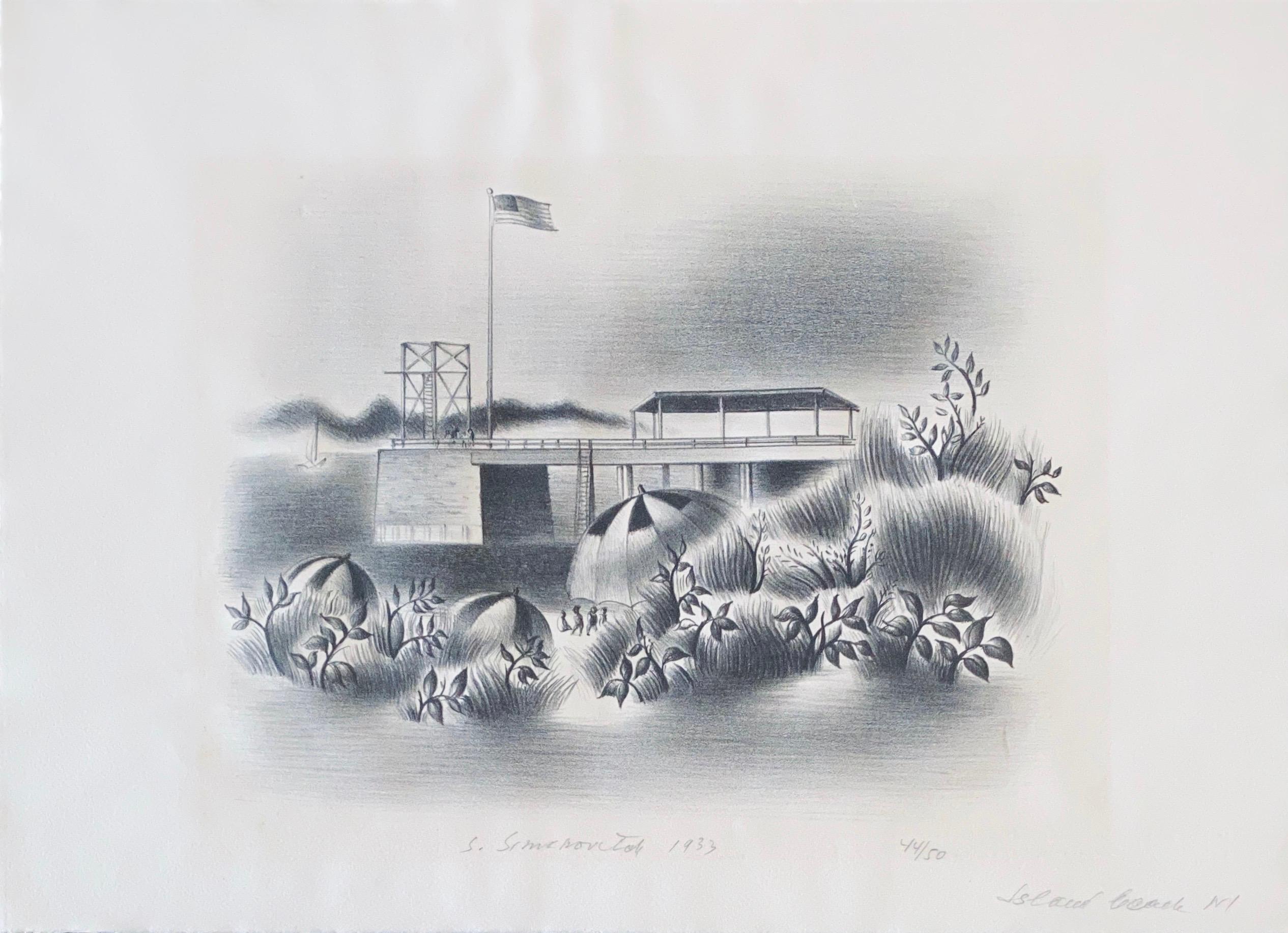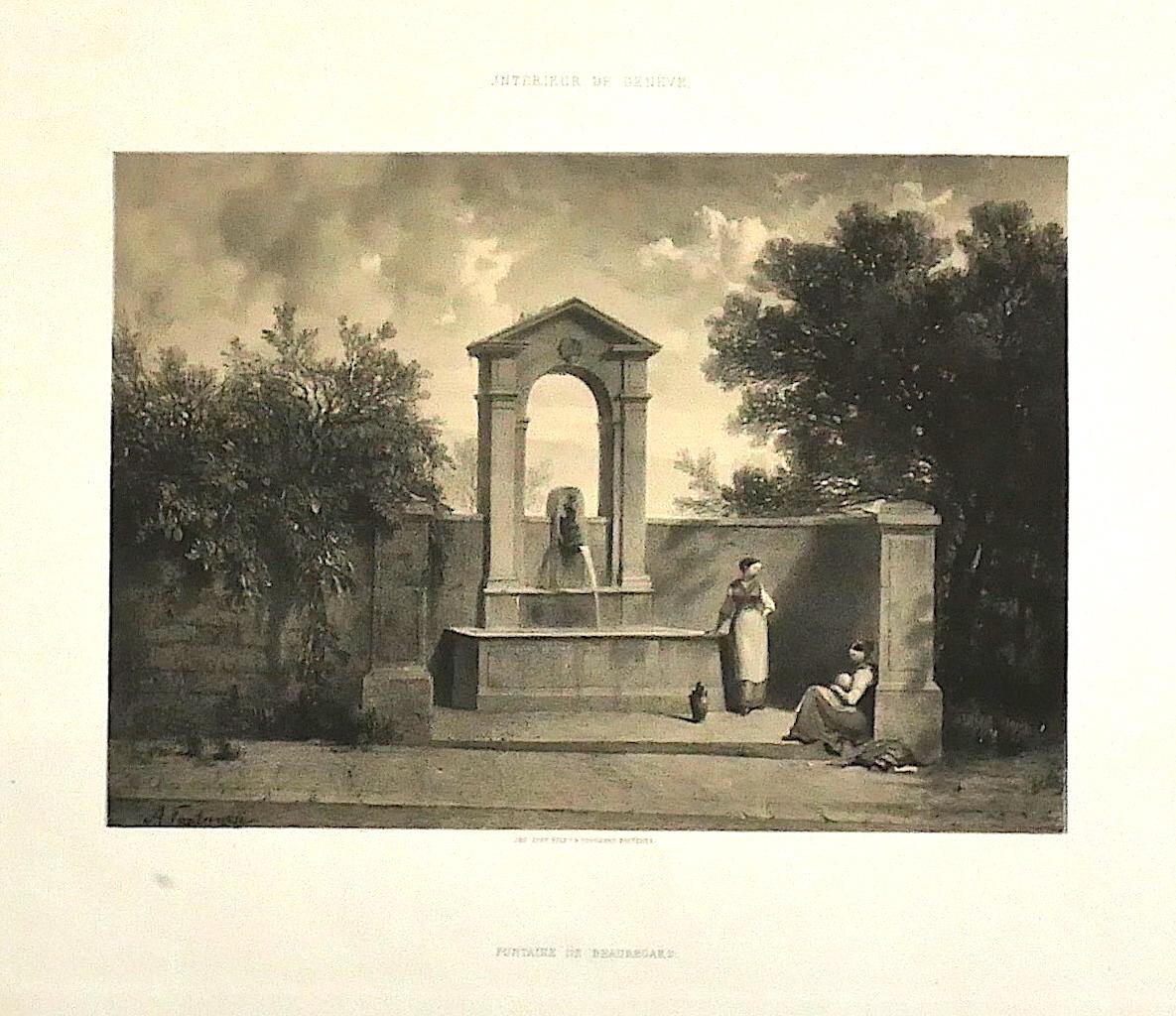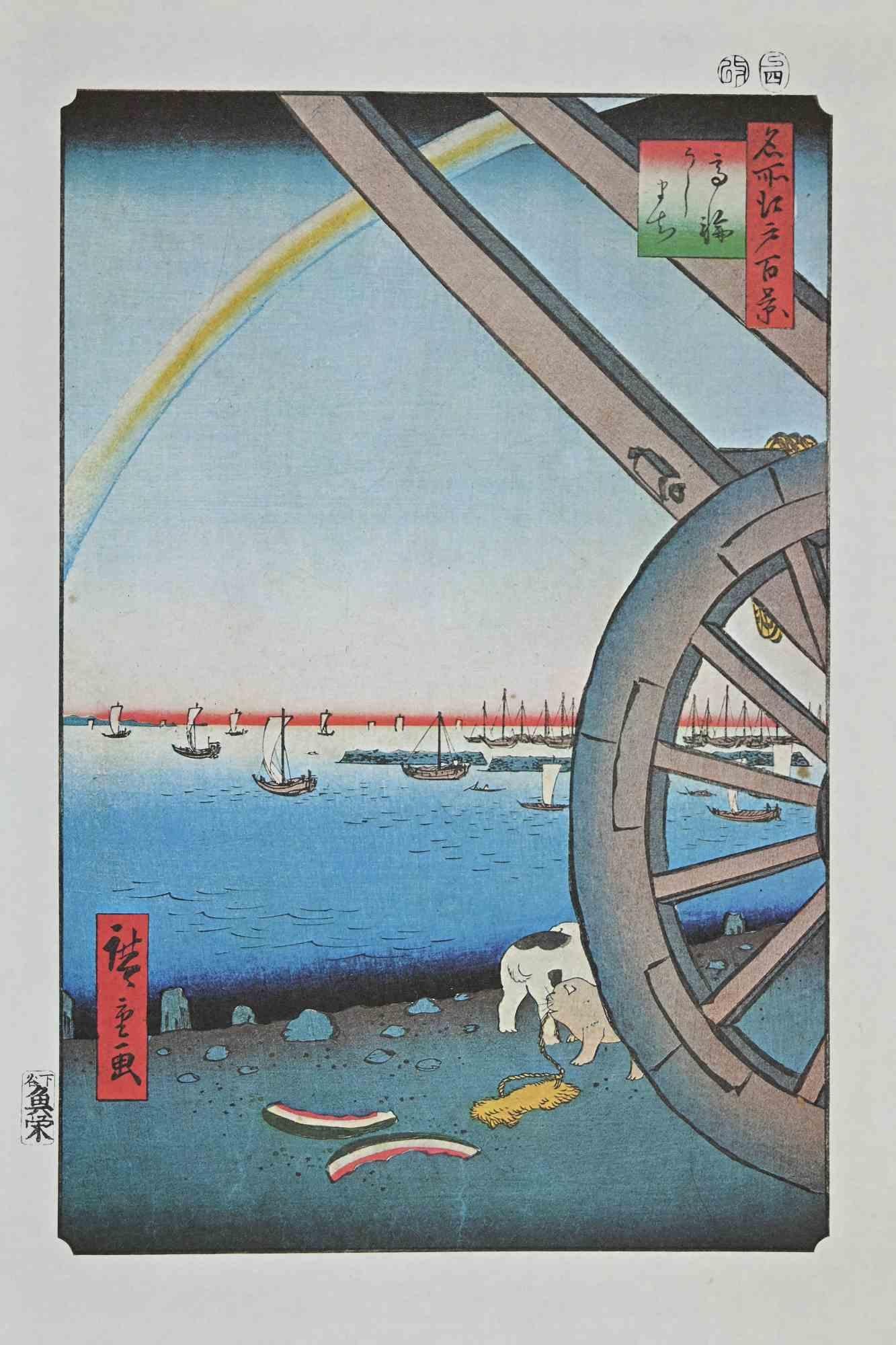Items Similar to Léger, Composition, mes voyages (after)
Want more images or videos?
Request additional images or videos from the seller
1 of 12
Léger, Composition, mes voyages (after)1970
1970
About the Item
Lithograph on vélin bouffant des Papeteries de Hauteville paper. Unsigned and unnumbered, as issued. Good condition. Notes: From the folio, Fernand Léger mes voyages avec un poème d'aragon et des lithographies de l’auteur, 1970. Published by Editeurs Français Réunis, Paris, and Production Edito-Service S.A., Le Grand-Saconnex, Canton of Genève, 1970; rendered by Mourlot Frères, Paris; printed by Production Edito-Service S.A., Le Grand-Saconnex, Canton of Genève and Italy. Excerpted from the folio (translated from French), Printing was finished in October 1960 on the presses of François Monod. The lithographs of Fernand Léger were pulled by the care of Mourlot Frères under the supervision of Nadia Léger. It was taken from this folio CCLXXXI examples on vélin d'Arches, including a single example with an original drawing, the manuscript of the poem and a complete double suite marked UN; V examples with a black and color suite marked from II to VI; V examples with a black suite marked from VII to XI; CCL examples marked from XII to CCLI and XXX non-commerce copies marked from H.C. I to H.C. XXX. This facsimile edition, 25 x 35 cm, was drawn with permission Editeurs Français Réunis, à Paris, on Vélin bouffant des Papeteries de Hauteville. Production Edito-Service S.A. Genève, printed in Italy.
FERNAND LEGER (1881-1955) was a French painter, sculptor, and filmmaker. In his early works he created a personal form of cubism (known as "tubism") which he gradually modified into a more figurative, populist style. His boldly simplified treatment of modern subject matter has caused him to be regarded as a forerunner of pop art. Léger was born in Argentan, Orne, Lower Normandy, where his father raised cattle. Fernand Léger initially trained as an architect from 1897 to 1899, before moving in 1900 to Paris, where he supported himself as an architectural draftsman. After military service in Versailles, Yvelines, in 1902–1903, he enrolled at the School of Decorative Arts after his application to the École des Beaux-Arts was rejected. He nevertheless attended the Beaux-Arts as a non-enrolled student, spending what he described as "three empty and useless years" studying with Gérôme and others, while also studying at the Académie Julian. He began to work seriously as a painter only at the age of 25. At this point his work showed the influence of impressionism, as seen in Le Jardin de ma mère (My Mother's Garden) of 1905, one of the few paintings from this period that he did not later destroy. A new emphasis on drawing and geometry appeared in Léger's work after he saw the Cézanne retrospective at the Salon d'Automne in 1907. In 1909, he moved to Montparnasse and met Alexander Archipenko, Jacques Lipchitz, Marc Chagall, Joseph Csaky and Robert Delaunay. In 1910, he exhibited at the Salon d'Automne in the same room (salle VIII) as Jean Metzinger and Henri Le Fauconnier. In his major painting of this period, Nudes in the Forest, Léger displays a personal form of Cubism that his critics termed "Tubism" for its emphasis on cylindrical forms. In 1911, the hanging committee of the Salon des Indépendants placed together the painters identified as 'Cubists'. Metzinger, Albert Gleizes, Le Fauconnier, Delaunay and Léger were responsible for revealing Cubism to the general public for the first time as an organized group. The following year he again exhibited at the Salon d'Automne and Indépendants with the Cubists, and joined with several artists, including Le Fauconnier, Metzinger, Gleizes, Francis Picabia and the Duchamp brothers, Jacques Villon, Raymond Duchamp-Villon and Marcel Duchamp to form the Puteaux Group—also called the Section d'Or (The Golden Section) paintings, from then until 1914, became increasingly abstract. Their tubular, conical, and cubed forms are laconically rendered in rough patches of primary colors plus green, black and white, as seen in the series of paintings with the title Contrasting Forms. Léger made no use of the collage technique pioneered by Braque and Picasso.
- Creation Year:1970
- Dimensions:Height: 13.78 in (35.01 cm)Width: 9.84 in (25 cm)
- Medium:
- Movement & Style:
- After:Fernand Léger (1881-1955, French)
- Period:
- Condition:
- Gallery Location:Auburn Hills, MI
- Reference Number:1stDibs: LU1465214473242
About the Seller
4.9
Gold Seller
These expertly vetted sellers are highly rated and consistently exceed customer expectations.
Established in 2002
1stDibs seller since 2021
871 sales on 1stDibs
Typical response time: 1 hour
- ShippingRetrieving quote...Ships From: Clinton Township, MI
- Return PolicyA return for this item may be initiated within 1 day of delivery.
More From This SellerView All
- Dufy, Bouquet, Vacances forcées (after)By Raoul DufyLocated in Auburn Hills, MILithograph on papier bouffant des Papeteries de Casteljoux paper. Unsigned and unnumbered, as issued. Good condition. Notes: From the folio, Vacances forcées 1970. Published by Éditi...Category
1970s Modern Landscape Prints
MaterialsLithograph
- Matisse, Faune (Faun), Poésies (after)By Henri MatisseLocated in Auburn Hills, MILithograph on papier bouffant des Papeteries de Casteljoux paper. Unsigned and unnumbered, as issued. Good condition. Notes: From the folio, Poésies de Stéphane Mallarmé, Eaux-fortes...Category
1970s Modern Landscape Prints
MaterialsLithograph
- Matisse, Composition, Poésies (after)By Henri MatisseLocated in Auburn Hills, MILithograph on papier bouffant des Papeteries de Casteljoux paper. Unsigned and unnumbered, as issued. Good condition. Notes: From the folio, Poésies de Stéphane Mallarmé, Eaux-fortes...Category
1970s Modern Landscape Prints
MaterialsLithograph
- Matisse, Eventail de Madame Mallarmé (Madame Mallarmé's Fan), Poésies (after)By Henri MatisseLocated in Auburn Hills, MILithograph on papier bouffant des Papeteries de Casteljoux paper. Unsigned and unnumbered, as issued. Good condition. Notes: From the folio, Poésies de Stéphane Mallarmé, Eaux-fortes...Category
1970s Modern Landscape Prints
MaterialsLithograph
- Matisse, Composition, Poésies (after)By Henri MatisseLocated in Auburn Hills, MILithograph on papier bouffant des Papeteries de Casteljoux paper. Unsigned and unnumbered, as issued. Good condition. Notes: From the folio, Poésies de Stéphane Mallarmé, Eaux-fortes...Category
1970s Modern Landscape Prints
MaterialsLithograph
- Matisse, Prose pour des esseintes, Poésies (after)By Henri MatisseLocated in Auburn Hills, MILithograph on papier bouffant des Papeteries de Casteljoux paper. Unsigned and unnumbered, as issued. Good condition. Notes: From the folio, Poésies de Stéphane Mallarmé, Eaux-fortes...Category
1970s Modern Landscape Prints
MaterialsLithograph
You May Also Like
- Simka Simkhovitch WPA Artist Lithograph Island Beach 1933 American ModernistBy Simka SimkhovitchLocated in Surfside, FLSimka Simkhovitch (Russian/American 1893 - 1949) signed lithograph. Pencil signed and dated "S. Simkhovitch 1933" lower center. Title "Island Beach," in pencil lower left of sheet. Numbered "44/50" in pencil lower right. (it is either Island Beach Wisconsin or New Jersey) Simka Simkhovitch (Симха Файбусович Симхович) (aka Simka Faibusovich Simkhovich) (Novozybkov, Russia May 21, 1885 O.S./June 2, 1885 N.S.—Greenwich, Connecticut February 25, 1949) was a Ukrainian-Russian Jewish artist and immigrant to the United States. He painted theater scenery in his early career and then had several showings in galleries in New York City. Winning Works Progress Administration (WPA) commissions in the 1930s, he completed murals for the post offices in Jackson, Mississippi and Beaufort, North Carolina. His works are in the permanent collections of the Dallas Museum of Art, the National Museum of American Art and the Whitney Museum of American Art. Born outside Kyiv (Petrograd Ukraine) into a Jewish family who owned a small department store. During a severe case of measles when he was seven, Simcha Simchovitch sketched the views outside his window and decided to become an artist, over his father's objections. Beginning in 1905, he studied at the Grekov Odessa Art School and upon completion of his studies in 1911 received a recommendation to be admitted to the Imperial Academy of Arts. Though he enrolled to begin classes in architecture, painting, and sculpture at the Imperial Academy, he was dropped from the school roster in December because of the quota on the number of Jewish students and drafted into the army. Simchovitch served as a private in the 175th Infantry Regiment Baturyn [ru] until his demobilization in 1912. Re-enrolling in the Imperial Academy, he audited classes. Simka Simkhovitch exhibited paintings and sculptures in 1918 as part of an exhibition of Jewish artists and in 1919 placed 1st in the competition "The Great Russian Revolution" with a painting called "Russian Revolution" which was hung in the State Museum of Revolution. In 1922, Simkha Simkhovitch exhibited at the International Book Fair in Florence (Italian: Fiera Internazionale del Libro di Firenze). In 1924, Simkhovitch came to the United States to make illustrations for Soviet textbooks and decided to immigrate instead. Initially he supported himself by doing commercial art and a few portrait commissions. In 1927, he was hired to paint a screen for a scene in the play "The Command to Love" by Fritz Gottwald and Rudolph Lothar which was playing at the Longacre Theatre on Broadway. Art dealers began clamoring for the screen and Simkhovitch began a career as a screen painter for the theater. Catching the attention of the screenwriter, Ernest Pascal, he worked as an illustrator for Pascal, who then introduced him to gallery owner, Marie Sterner. Simkhovitch's works appeared at the Marie Sterner Gallery beginning with a 1927 exhibit and were repeated the following year. Simkhovitch had an exhibit in 1929 at Sterner's on circus paintings. In 1931, he held a showing of works at the Helen Hackett Gallery, in New York City and later that same year he was one of the featured artists of a special exhibit in San Francisco at the California Palace of the Legion of Honor in Lincoln Park. The exhibit was coordinated by Marie Sterner and included four watercolors, including one titled "Nudes". He is of the generation of Russian Soviet artists such as Isaac Pailes, Serge Charchoune, Marc Chagall, Chana Orloff, Isaac Ilyich Levitan, and Ossip Zadkine. In 1936, Simkhovitch was selected to complete the mural for the WPA Post office project in Jackson, Mississippi. The mural was hung in the post office and courthouse in 1938 depicted a plantation theme. Painted on the wall behind the judge’s bench, “Pursuits of Life in Mississippi”, a depiction of black workers engaged in manual labor amid scenes of white professionals and socialites, was eventually covered over in later years during renovations due to its stereotypical African American imagery. The following year, his painting "Holiday" won praise at an exhibition in Lincoln, Nebraska. In 1940, Simkhovitch's second WPA post office project was completed when four murals, "The Cape Lookout Lighthouse and the Orville W. Mail Boat", "The Wreck of the Crissie Wright", "Sand Ponies" and "Canada Geese" were installed in Beaufort, North Carolina. The works were commissioned in 1938 and did not generate the controversy that the Jackson mural had. The main mural is "The Wreck of the Crissie Wright" and depicts a shipwreck which had occurred in Beaufort in 1866. "The Cape Lookout Lighthouse and the Orville W. Mail Boat" depicted the lighthouse built in 1859 and the mail boat that was running mail during the time which Simkhovitch was there. The boat ran mail for the area until 1957. "Sand Ponies" shows the wild horses common to the North Carolina barrier islands and "Canada Geese" showed the importance of hunting and fishing in the area. All four murals were restored in the 1990s by Elisabeth Speight, daughter of two other WPA muralists, Francis Speight...Category
1930s American Modern Landscape Prints
MaterialsLithograph
- Alps - Lithography on Paper by A. Lauro - 20th CenturyLocated in Roma, ITAlps is an original lithography artwork on paper realized by A. Lauro in the XX century. The State of preservation is very good. Included a white Passepartout: 34 x 49 cm. The ar...Category
20th Century Modern Figurative Prints
MaterialsLithograph
- Interior of Geneva - Lithograph by Antonio Fontanesi - 19th CenturyBy Antonio FontanesiLocated in Roma, ITThe Interior of Geneve is an original Lithograph realized by Antonio Fontanesi in the 19th Century. The state of preservation of the artwork is excellent. Image Dimensions: 15.5 x ...Category
19th Century Modern Figurative Prints
MaterialsLithograph
- Maisons sur la Rivière - Lithograph by H. Le Sildaner - Early 20th CenturyBy Henri Le SidanerLocated in Roma, ITMaisons sur la Rivière is an Original Lithograph realized by Henri Le Sidaner (1862-1939). The artwork is in good condition. The artwork is depicted through soft strokes in a well-...Category
Early 20th Century Modern Landscape Prints
MaterialsLithograph
- The Sea - Lithograph After Utagawa Hiroshige - Mid 20th CenturyBy Utagawa HiroshigeLocated in Roma, ITThe Sea is a modern artwork realized in the Mid-20th Century. Mixed colored lithograph after a woodcut realized by the great Japanese artist Utagawa Hiroshige in the 19th century. ...Category
Mid-20th Century Modern Figurative Prints
MaterialsLithograph
- 'Financial District', New York City — 1930s American ModernismBy Howard Norton CookLocated in Myrtle Beach, SCHoward Cook, 'Financial District', lithograph, 1931, edition 75, Duffy 155. A fine, richly-inked impression, on cream wove paper, the full sheet with wide margins (2 3/4 to 5 5/8 inches), in excellent condition. Image size 13 5/16 x 10 3/8 inches (338 x 264 mm); sheet size 23 x 16 inches (584 x 406 mm). Matted to museum standards, unframed. Literature: 'American Master Prints from the Betty and Douglas Duffy Collection', the Trust for Museum Exhibitions, Washington, D.C., 1987. Collections: Crystal Bridges Museum of American Art, Library of Congress, Metropolitan Museum of Art, Philadelphia Museum of Art, Smithsonian American Art Museum. ABOUT THE ARTIST Howard Norton Cook (1901-1980) was one of the best-known of the second generation of artists who moved to Taos. A native of Massachusetts, he studied at the Art Students League in New York City and at the Woodstock Art Colony. Beginning his association with Taos in 1926, he became a resident of the community in the 1930s. During his career, he received two Guggenheim Fellowships and was elected an Academician in the National Academy of Design. He earned a national reputation as a painter, muralist, and printmaker. Cook’s work in the print mediums received acclaim early in his career with one-person exhibitions at the Denver Art Museum (1927) and the Museum of New Mexico (1928). He received numerous honors and awards over the years, including selection in best-of-the-year exhibitions sponsored by the American Institute of Graphics Arts, the Brooklyn Museum, the Society of American Etchers, and the Philadelphia Print Club. His first Guggenheim Fellowship took him to Taxco, Mexico in 1932 and 1933; his second in the following year enabled him to travel through the American South and Southwest. Cook painted murals for the Public Works of Art Project in 1933 and the Treasury Departments Art Program in 1935. The latter project, completed in Pittsburgh, received a Gold Medal from the Architectural League of New York. One of his most acclaimed commissions was a mural in the San Antonio Post Office in 1937. He and Barbara Latham settled in Talpa, south of Taos, in 1938 and remained there for over three decades. Cook volunteered in World War II as an Artist War Correspondent for the US Navy, where he was deployed in the Pacific. In 1943 he was appointed Leader of a War Art Unit...Category
1930s American Modern Figurative Prints
MaterialsLithograph





